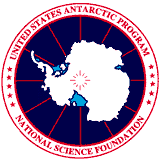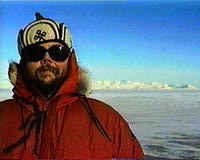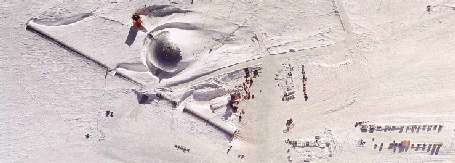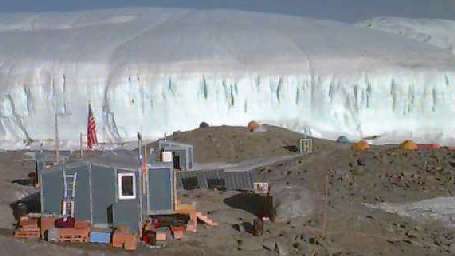| The Seventh Continent |
 |
| Welcome to "The Seventh Continent",
Ethan's Antarctic Home Page To all of you who have found your way here thanks to International Talk Like a Pirate Day, Ahoy, Me Hearties! If you found my webpage mentioned in the April, 2005, edition of "Cooking Light" Magazine. You'll find my mention of cooking Thai curry in the Antarctic here. Winter is effectively over at Pole (the first three Basler flights have arrived). Mainbody started at McMurdo a few weeks ago; they've gotten 11 C-17 flights and one Herc so far. I'm not back to Pole yet (I'm due in on the fifth Basler flight), and nobody is running my EarthDial at the moment, but perhaps I'll have a chance to get it running soon. This Summer season at Pole is starting off differently than in recent years. Because of early-season cold weather over the past few Octobers, the usual station-opening LC-130 flight around 20 October has been pushed back to 29 October, and in its place, there are six "pre-opening" flights on a Basler (a modernized DC-3, essentially); I was scheduled to go down on the fourth flight (on Sunday), arriving about the same time I usually do, just not on the first plane of the year. Unfortunately, due to bad weather, I'm already three days late, and have been bumped to a later flight. Last summer's Ice Cube deployment went well - they added 13 new strings to the 8 we installed the year before, taking it from 'IC9' to 'IC22'. This season's plans are to install 14-18 strings. While you are waiting on me to have time to make updates, you can see what I was up to two years ago, four years ago, and twelve years ago this month. I was surprised be browsing through the Sunday paper in Christchurch and running across a picture of me at the Pole from July, 2004, as I posed for my 300 Club photo Readers of the online geek comic UserFriendly might recognize me from the 2004 plot-line when the UF crew visited the South Pole. If you've been here before, you might want to look for the most recent entries in my journal. I am still recovering from fallout from my emergency rehosting last year, but at least my gallery and site search are working again (the recent modifications page and feedback pages are still out of order). The answer to the number one question, "how many continents are there?" is seven: Asia, Africa, North America, South America, Antarctica, Europe and Australia (in decreasing order of size).
|









